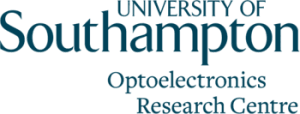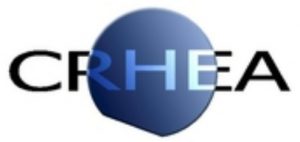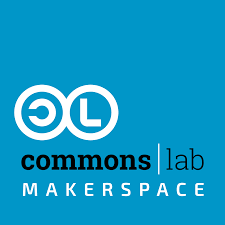Partners

The University of Eastern Finland (UEF, Itä-Suomen yliopisto) has been established in 2010 after merger of the University of Joensuu and the University of Kuopio. UEF is one of the largest multidisciplinary universities in Finland that is efficient in research, education and societal impact. The UEF team belongs to the Institute of Photonics of UEF, which has recently emerged as a leading research centre in the field of nanooptics and nanophotonics in Finland.
Role and Profile of key people:
- Yuri Svirko (H-index =32) received PhD in Physics from Moscow State University in 1983. In 1994-2001, he worked at the University of Southampton (UK) and University of Tokyo on nonlinear optics and ultrafast polarization spectroscopy of nanostructures. At the UEF he works on nonlinear properties of nanocarbons and THz spectroscopy. He is a member of the Graphene Flagship Management panel.
- Polina Kuzhir (H-index = 55) received PhD in Theoretical Physics from Belarus Sate University in 1996, currently she is a Professor in Nanomaterials at the UEF. She is expert in the field of carbon/graphene nanomaterials theoretical and experimental electromagnetics with the current focus on low-dimensional materials.
- Georgy Fedorov received PhD in Applied Physics from Kurchatov Institute, Moscow in 2002. He has about 20 years’ experience in the field of transport properties and photoresponse of nanodevices. Since 2022 he is a Senior Researcher at the UEF (H-index = 15, Scopus).

FORTH is one of the largest research centres in Greece. Its Institute of Electronic Structure and Laser (IESL), which will be involved in the current project, has word-leading activities in materials and devices, and lasers and applications. Photonic, Photonic and Metamaterials (PPM) and Ultrashort Non-linear laser Interactions and Sources (UNIS) will be involved in the project. The PPM group the has a world recognized expertise in photonic crystals and metamaterials and focuses on the study of chiral metamaterials, plasmonic systems, graphene-based metamaterials, and switchable/tunable metamaterials. The UNIS group is focusing on (i) nonlinear optics with high intensity ultrashort laser pulses, (ii) photonic structuring in the bulk of dielectrics and semiconductors, laser direct writing and silicon photonics, and (iii) strong field THz science and technology and THz metamaterial devices.
Role and Profile of key people:
- Maria Kafesaki is Assoc. Professor in the Dept. of Materials Science and Technology of the University of Crete and associated Researcher at IESL-FORTH. She obtained her Ph.D. in 1997, at the Physics Department of the University of Crete. Her current research focuses on electromagnetic (EM) wave propagation in periodic and random media with emphasis on photonic crystals and metamaterials. She has more than 100 publications in refereed journals, h-index=41 (WoS). In the project, she will be involved in the designing and modelling of chiral metamaterials.
- Stelios Tzortzakis received his Ph.D. from the Ecole Polytechnique (France, 2001) in Nonlinear Optics. He is Assoc. Professor at the Materials Department of the University of Crete in Greece and Professor of Physics at Texas A&M University at Qatar. Prof. Tzortzakis is a world recognized expert in nonlinear propagation phenomena. He has more than 150 publications in high impact journals (e.g. Nature) and h-index=43 (Google Scholar). He has received the “Rozhdestvensky Medal” of the Russian Optical Society for key contributions in strong field Laser and THz science. In the project, he will be involved in the THz-TDS chiral metamaterials.

The Optoelectronics Research Centre (ORC) at Southampton University has been at the very forefront of optical technology for over 40 years. The ORC is the UK’s government’s centre of excellence in optoelectronics. The ORC runs research programmes spanning most applications of optical technology including telecommunications, lasers and optical materials. The activities relevant to this project are in the areas of optical materials processing by strong electric fields and by intense ultrashort pulse lasers, in particular for producing materials with new functionalities. Micro- and nano- structuring of transparent materials and metal-glass nanocomposites by femtosecond laser irradiation are the areas of active research. The research also involves characterization of optical and electrical properties of materials, including refractive index, second- and third-order optical non lineartities, photosensitivity and electrical conductivity.
Role and Profile of key people:
- Peter G. Kazansky studied physics in Moscow State University and received Ph. D from the General Physics Institute in 1985. From 1989 to 1993 he led a group in the GPI, which unravelled the mystery of light-induced frequency doubling in glass. In 1992 he joined the Optoelectronics Research Centre at the University of Southampton where since 2001 he is a professor pursuing his interests in new optical materials and phenomena. More recently he pioneered the field of ultrafast laser nanostructuring in glass leading to invention of “5D memory crystal,” which holds a Guinness world record for the most durable data storage medium. He is a Fellow of the Optical Society of America.

Epitaxial growth is the core activity of CRHEA, mainly wide band gap semiconductors: gallium nitride (GaN) and related AlGaInN alloys, zinc oxide (ZnO), and silicon carbide (SiC). These materials are used either to study there fundamental properties, or to realize components. In both cases, they refer to various thematic fields such as electronics, opto-electronics and nanotechnology. As semiconductors are the basis for most of electronic and optoelectronic devices, it is essential to have processing capabilities. As a matter of fact, our clean room (CRHEATEC) allows us to fabricate test devices which provide the final assessment of the properties the materials and heterostructures grown in the laboratory. This facility is also open to external partners and customers and to the members of this program.
Role and Profile of key people:
- Dr. Patrice Genevet is a senior researcher at CNRS. His research mainly focus on metasurfaces and metamaterials. He published 95 peer review articles, h-index 45. Other key people from CRHEA will be involved including, Dr. Samira Khadir, Miss C. Kyrou and a couple of postdoctoral fellows and students will be involved in this program.

The CommonsLab is a technology coop, active in the fields of research and laboratory automation, Internet of Things (network, cloud-based apps, embedded systems), microelectronics, software systems design.
Role and Profile of key people:
- Jann Eike Kruse (PhD – Head of R&D Hardware) holds a Diplom in applied semiconductor physics, a PhD in laser physics and has years of experience working with microcontrollers, embedded systems and firmware programming.
- Dimitris Koukoulakis (MRes – Head of R&D Software) hodls a Master of Research in sofware engineering with many years of experience in mobile computing, in embedded IPTV systems, as well as in software systems engineering and full-stack application design, including development from low-level C programming up to high-level cloud and web applications.

XpectralTEK is a company that creates innovative & intelligent cloud-based sensor solutions. The technology focus is on imaging and spectroscopy expanding the standard sensitivity, covering all the spectral range from UV, visible up to the Infra-red. Being a KET Technology, its applications are multiple covering but not limited to Materials, Cultural Heritage, Agri-food, Industry, etc. With its advanced technology it is now possible to understand better the material surface and its stresses.
Role and Profile of key people:
- Vassilis Papadakis (Physicist) has degrees in spectroscopy and imaging with applications in material science. Cultural heritage, biology, and others. He has more than 50 scientific publications in peer reviewed international journals and multiple participations in conferences.
- Marlene Machado (Computer Scientist) will participate in the WPs related to defining the specifications and all the processing and analysics of data acquired.
- Pedro Pereira (Product design) will participate in the WPs related to defining the specifications and on the design and development of the prototypes.
- Henrique Soares (Computer Scientist) will participate in the WPs related to defining the specifications and the development of the software applications.

NAPA Technologies is a French deeptech SME specialised in nano-patterned functional surfaces, in particular for nuclear detection, optical detection and biological analysis. It develops innovative and patented technologies to create high performance surfaces combining intrinsic (chemical) material properties with physical ones generated by patterning, using nano-imprint lithography (NIL).
Role and Profile of key people:
- Daniel Turover (INSEAD MBA, ESCP-Paris) founder and head of R&D is a senior manager of R&D projects. He has a strong background in materials for electronics (Silicon, SiC, GaN, Diamond) and optics (scintillators, SiC, III-N and II-VI materials) working at Saint-Gobain and for several start-ups. He will be in charge of project management as well as IP / valorisation.
- Dr Valentin GATE is a senior R&D engineer focused on equipment development and applications in the field of optics. He developed the NIL processes at NAPA and is in charge of the research lab.
- Dr Colette TURBIL is a R&D engineer focused on solgel processes, wettability and metasurface fabrication.

The Institute for Photon Science and Technology at the Graduate School of Science of The University of Tokyo was established in October 2013 to form a centre for photon science at the University of Tokyo The IPST promotes collaboration with industry and spreads the photonic technologies to society.
Role and Profile of key people:
- Kuniaki Konishi received his PhD in 2008 in The Universiy of Tokyo, and now he is an assistant professor at the IPST. His research interests are polarization control with metamaterials and THz polarization spectroscopy. He has been published 52 original papers and has h-index 18 (WoS)